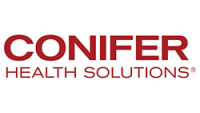No Surprises Act inspires short-term and long-term operational areas of focus
The rush may be over, but the race has just begun.
After sprinting to implement the requirements of the No Surprises Act by the Jan. 1, 2022, deadline, providers must now shift attention to refining their processes for what lies ahead.
Assuming familiarity with the law’s key requirements, providers and facilities are focused on the impact to their upfront processes such as scheduling and registration, however, there are equally significant impacts on processes for billing both uninsured/self-pay and out-of-network accounts. According to projections from the U.S. Department of Health and Human Services (HHS), providers can expect to see nearly 3.5 million uninsured patients eligible in 2022 to receive the Good Faith Estimates (GFE) required by law.
Producing a single GFE could be extremely time-consuming, depending on the requested services and whether co-providers or co-facilities are involved. In addition, providers have had to develop processes to deliver additional disclosures required under the law for insured and uninsured patients.
The compressed time frame to implement protocols, coupled with the broad implications tied to the accuracy and completeness of the GFE, have forced swift, tactical solutions that may not be sustainable for anticipated patient volumes over the long term.
To meet the required timeline for providing GFEs today, providers can accelerate their scheduling process upfront by gathering the following eight demographics from each patient:
- Patient name
- Date of birth
- Procedures, including CPT codes
- Diagnoses, including diagnosis codes
- Insurance plan(s)
- Policy number(s)
- Email address(s)
- Ordering physician
In addition to implementing a more thorough scheduling process, providers should evaluate their patient estimation tools and automate them as effectively as possible. With improving basic interface needs, most patient information, including eligibility, can be fed to the estimator without manual effort from the provider.
Additional steps providers can take to refine their short-term process include:
- Establish standard patient communications for mail and email of disclosures and GFEs.
- Reinforce training to help staff understand what’s required by the statute and what they can expect in 2022.
- Measure progress on GFE turn-around times and patient contact.
- Prepare for the insured portion of the regulation by honing scheduling practices now.
Certain elements of the law are expected to go into effect through 2022, with additional requirements impacting both insured and uninsured/self-pay patients. With these requirements, providers can expect:
- GFEs for insured patients: Anticipate requirements to provide advance GFEs to insured patients
- Co-provider/co-facility fees: While HHS has indicated it is not enforcing this requirement at this time, expect that facility GFEs will need to include pricing information from co-providers and co-facilities. For example, this would include fees for radiologists, pathologists, anesthesiologists, etc.
- Heightened enforcement: Along the same lines, HHS has indicated it will use discretion in enforcing certain requirements to include global fees on estimates for now, primarily due to the short timeline to implement the law. Enforcement may become stricter as facilities and providers have been given more time to fully develop plans and communication channels.
- Advanced Explanation of Benefits (EOB): Communications and processes with payers will need to be established so that the required Advanced EOB can be coordinated and provided to insured patients.
- Consent signatures: When a patient is out-of-network for non-emergency services, signed consents will be required to note that the individual agrees to be treated by non-participating facilities or providers and understands they may be subject to balance bills and cost-sharing requirements.
In the future, anticipating long-term implications of the No Surprises Act requires an adaptive lens. Several key areas require attention and exploration, such as:
- Patient access and volumes: Because the law limits consumers’ costs for out-of-network services, patients will have more options for their care, and patient volumes will likely increase as a result.
- Financial analysis: Providers should examine the financial impact created by the reduction in allowable charges for services. Looking at case mix, payer mix and other factors will highlight how the law affects a provider’s long-term bottom line.
- Operations systems: The law has a broad-reaching effect on a provider’s operations, from producing GFEs and other notices to communicating with co-providers/co-facilities to updating in-network and out-of-network information. Each of these steps requires additional procedures and could also have staffing implications.
- Data management: Where and how to store the pricing information from co-providers and co-facilities becomes both a critical systems issue and a compliance concern. Currently, the industry faces challenges in securely communicating this type of data between providers through efficient electronic channels.
- Compliance and legal requirements: Careful examination and monitoring of the complex, detailed and evolving legal and compliance obligations associated with the No Surprises Act is critical so that providers and facilities can avoid potentially hefty fines, and penalties, not to mention possible civil litigation, enforcement activities and the resulting reputational harm.
While the flurry of reactive efforts caused by the required quick rollout of the No Surprises Act has subsided, providers now must redirect this energy toward plans for maintaining and sustaining viable long-term processes.






